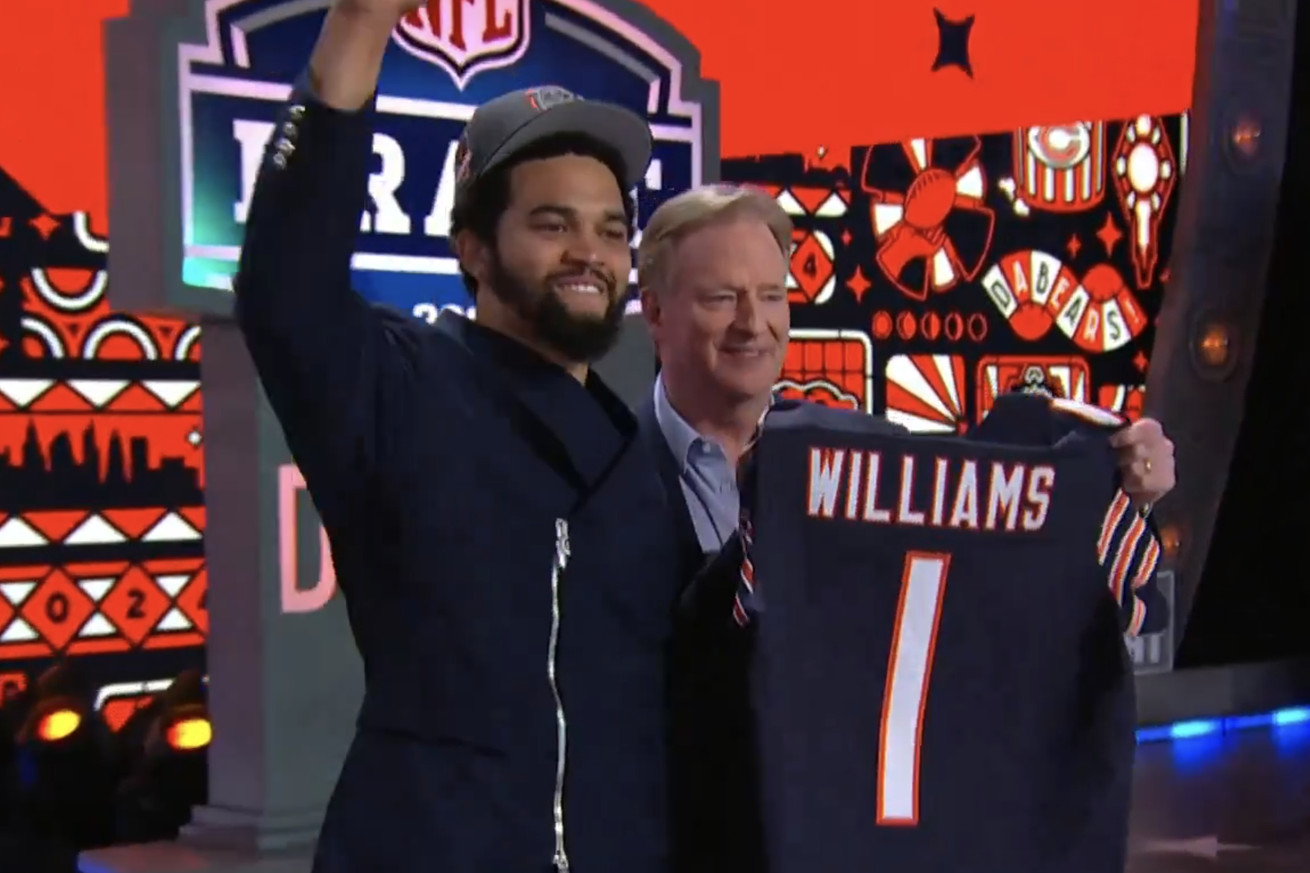
After months of speculation, Caleb Williams is a Chicago Bear. Here is why
Months of rumors, speculation, debates over perceived flaws, ended with the NFL world right back where we started.
With Caleb Williams the first-overall pick in the 2024 NFL Draft.
Chicago Bears general manager Ryan Poles indicated earlier this week that the team knew what they were doing with the first overall selection, but that we would all need to wait for the big reveal. That came shortly after 8:00 p.m. this evening, when Roger Goodell made it official with the announcement.
That allows us to shift the question around the pick from “who,” to “why.”
Similar to the question regarding who the Bears would be picking, the question of why Williams was the pick has its own easy answer.
He fits the mold of the ideal modern NFL quarterback.
Football is a never-ending game of adjustments. Offenses find success running a concept or concepts, defenses find some answers, offenses then counter those answers, and the cycle continues into perpetuity. And while the schemes have changed over the years, and cycled back-and-forth on both sides of the football, what continues to evolve is the athleticism of players on both sides of the football.
For example, Calijah Kancey ran a 4.68 40-yard dash during the 2023 NFL Scouting Combine, while weighing in at 281 pounds.
Defensive players are bigger, faster, stronger, and more athletic than ever, and that means that from time to time, success in the NFL for a quarterback — if not downright survival — comes down to your ability to create. The better you are in that realm, the better your odds are for success.
And the better your offense can be.
For all his strengths as a quarterback, and there are many, Williams’ ability to create off structure due to his blend of athleticism and second-reaction skills stands out.
Take this play against UCLA:
UCLA pass rusher Laiatu Latu — himself a likely first-round pick later tonight — gets near-immediate pressure on Williams. But rather than panic, or simply take off as a runner, the newest Chicago quarterback steps around Latu while keeping his eyes downfield. He then slides to the left, still with his eyes trained downfield, and finds a receiver breaking open. A simple flick of the wrist later, and the Trojans are in the red zone, with Williams having turned a potential sack into a huge play.
Or take this example, also against the Bruins:
The situation is a 3rd and 10, and the Bruins bring pressure from the second level with a linebacker blitzing on the right side of the offense. While that creates some pressure on Williams, he simply climbs the pocket, keeps the eyes downfield again, and creates another big play on the outside for USC.
One of the knocks on Williams, at least with respect to how he plays on the field, is that his creativity is not just a fantastic side dish, but it is rather the whole meal. But the more you watch him, the more you realize that Williams wants to play from the pocket more than anything else, and relies on his creativity outside it only when necessary.
Take this play against Oregon:
Williams opens to the left to read out this concept, but when the coverage from the Ducks takes away his initial look (USC is running an “NCAA Mills” concept with a deep post, a dig route, and a shallow crosser underneath) only then does he slide in the pocket, eventually moving to his right to buy some time and create an opportunity. That is when the post route eventually breaks open, and he creates another big play for the Trojans.
Or this play against Washington:
Once more you see that the creativity he showcases is more “subtle” than “drastic.” Williams, for everything that he can do running around and on the move, is also adept at simply using his feet to create space as a passer. On this play the footwork stands out, as he creates space in the pocket while keeping his eyes trained downfield, and finds a crossing route late in the down for a big play.
One of the knocks on Williams is that he might lean on his creativity too much, and that he takes too many risks when pressured. For a deeper dive into this discussion, I would recommend this lengthy video breakdown that myself and my dear friend Matt Waldman did earlier this draft cycle, where we discussed at length his ability to handle pressure, and what surprised us the most when studying Williams:
Williams has the ability to create outside the pocket, and to punish defenses in the blink of an eye when pressured or forced off his spot. But there is a duality to his game, and when given the chance, Williams wants to beat you from the pocket first, and will turn to that creative side only when necessary.
It is the perfect balance for a quarterback, and ideal for the modern game.
Which is why he was the first-overall selection.

Must See
-


American Football
/ 7 hours agoJa Morant had something meaner than finger guns for Heat rookie after hitting game-winner
Image via TNT broadcast Ja Morant flamed the Miami Heat both on and off...
By admin -


American Football
/ 10 hours agoBeware the injured PGA Tour player: Sam Ryder snatches Valero Texas Open lead
Photo by Jonathan Bachman/Getty Images Sam Ryder almost withdrew from the Valero Texas Open....
By admin -


American Football
/ 11 hours agoPGA Tour feels LIV Golf’s conditions for reunification is ‘unacceptable’
Photo by Orlando Ramirez/Getty Images A report from The Guardian said that the PGA...
By admin





